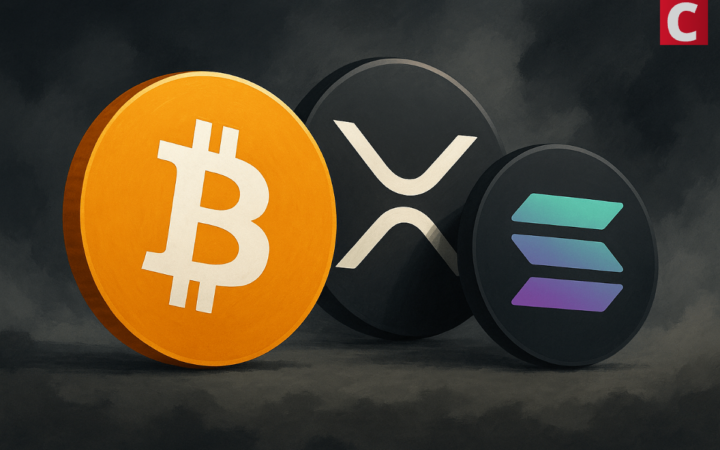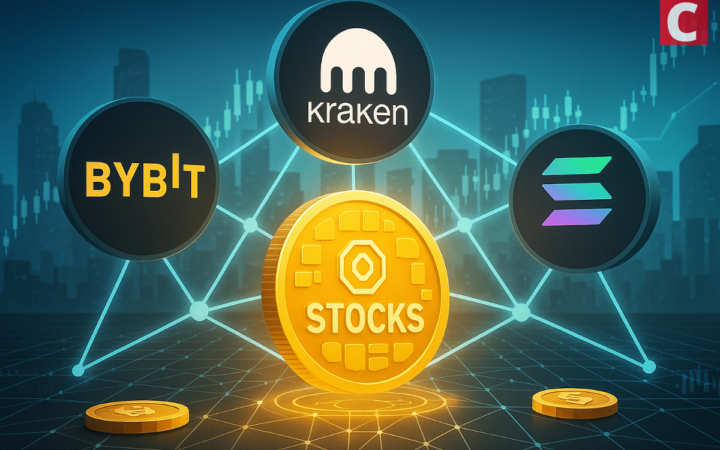
Please check out latest news, expert comments and industry insights from Coinspeaker's contributors.
There are still many scams and security risks in the crypto industry. Although this is a normal part of the evolution of any new tech, it still leaves a bitter taste in people’s mouths.
 Edited by Julia Sakovich
Updated
5 mins read
Edited by Julia Sakovich
Updated
5 mins read

Mass adoption of cryptocurrency has been a dream of many people for years. What would it take for billions of users and trillions of institutional dollars to enter the space? For years proponents of cryptocurrency have spoken about onboarding the next billion users to web3. What would it take to actually make this happen?
One of the first major steps towards institutional participation in the cryptocurrency industry is the Bitcoin Exchange Traded Funds (ETFs) that were recently approved in the United States (US). These ETFs have beaten expectations. Blackrock’s spot Bitcoin ETF hit 10 billion USD in assets faster than any other ETF.
We are all familiar with the story of these ETFs. The US Securities and Exchange Commission (SEC) rejected the applications for spot Bitcoin ETFs for years. But at the end of 2023, a court found that they had acted “arbitrarily and capriciously”. This paved the way for the approval of several spot Bitcoin ETFs. Billions of dollars flowed into these securities, kicking off price action that led to a Bitcoin all-time high of around $72,000.
The Bitcoin ETFs allow massive institutional money to enter the space and make Bitcoin much more accessible to the average investor. Financial advisors and wealth managers now have a Bitcoin product to sell to their clients.
It is also expected that this Bitcoin ETF is the first of many crypto ETFs to get approved in the US. The Ethereum ETF is up next. Applications have been filed and although there is some debate about when they will be approved, there is confidence that they will be approved. Billions of dollars are lining up to pour into the industry.
In addition to the progress from the private sector, governments across the globe are moving forward with crypto legislation. From the UK and Europe to Japan, South Africa, and Australia, laws are changing, licenses are being issued, and crypto is being regulated. The crypto industry is getting what it’s been asking for for so long – clarity on how to treat these digital assets.
The crypto industry is maturing. More institutional capital is flowing into the space, and regulatory clarity is being achieved. This progress adds a new dimension. Instead of crypto only being speculative retail-driven investments, large fundamentals-driven investors are now entering the space. This shift and maturation are incredibly positive for the industry.
The institutions are finally at the door but what about retail?
What is standing in the way of mass adoption?
There are still a few key aspects of the user experience in crypto that make it challenging for people to participate in the industry. These include issues with scams and security, high transaction fees KYC friction, and the sheer number of cryptocurrencies and blockchains. Here’s a deeper dive into each of these.
There are still many scams and security risks in the crypto industry. Although this is a normal part of the evolution of any new tech, it still leaves a bitter taste in people’s mouths. There is plenty of progress in this area. But it still feels intimidating to many people. Especially because the current crypto user experience feels so different from what many are used to. Companies like GoPlus Security are tackling this problem and fighting to protect users.
This may sound counterintuitive. However many studies indicate that the more choices a user is presented with, the harder is it for them to choose. This results in no choice being made or the user feeling regret at their choice. There are thousands of tokens to choose from, tens of different blockchains, and many different wallets and exchanges. Facing all these options can be daunting for people who know little about the industry.
Two types of transaction fees plague users. There are fees for converting fiat currency to crypto, and there are fees for actually doing transactions on-chain. The fees on-chain are disappearing, thanks to blockchains like Solana and Base (which is one of the chains in the Ethereum layer 2 ecosystem). When it comes to the fees for converting fiat to cryptocurrency, Ramp is a leader in the space, Ramp allows the easy on-and-off ramping between fiat and cryptocurrency.
Know Your Custom (KYC) is a requirement across the world. These requirements cause friction and impede the easy onboarding of users. However, there are solutions. Ramp has a very clean and elegant solution that allows for frictionless KYC.
Tremendous progress has been made. The puzzle pieces required to enable mass adoption by retail users are coming together. There is huge demand and the crypto industry is rising to meet it.
One final component of the journey toward mass adoption is wallets. Wallets are on-chain homes. But they have traditionally been hard to use and not very user-friendly. This, however, is rapidly changing.
There are now wallets that allow users to create accounts with an email address. The complexity of seed phrases can be removed and transaction fees are trending towards zero. Developers can add custom and complex logic to wallets to create interesting new use cases and tools that include account recovery functionality, limits for security reasons, automated investments, and so much more.
New accessible crypto securities combined with advances in regulation allow for institutional adoption. Retail users come when we improve the user experience with security, cheap on/off ramping, and simple KYC. And finally, when we have user-friendly wallets, we complete the puzzle.
Disclaimer: Coinspeaker is committed to providing unbiased and transparent reporting. This article aims to deliver accurate and timely information but should not be taken as financial or investment advice. Since market conditions can change rapidly, we encourage you to verify information on your own and consult with a professional before making any decisions based on this content.

Please check out latest news, expert comments and industry insights from Coinspeaker's contributors.





